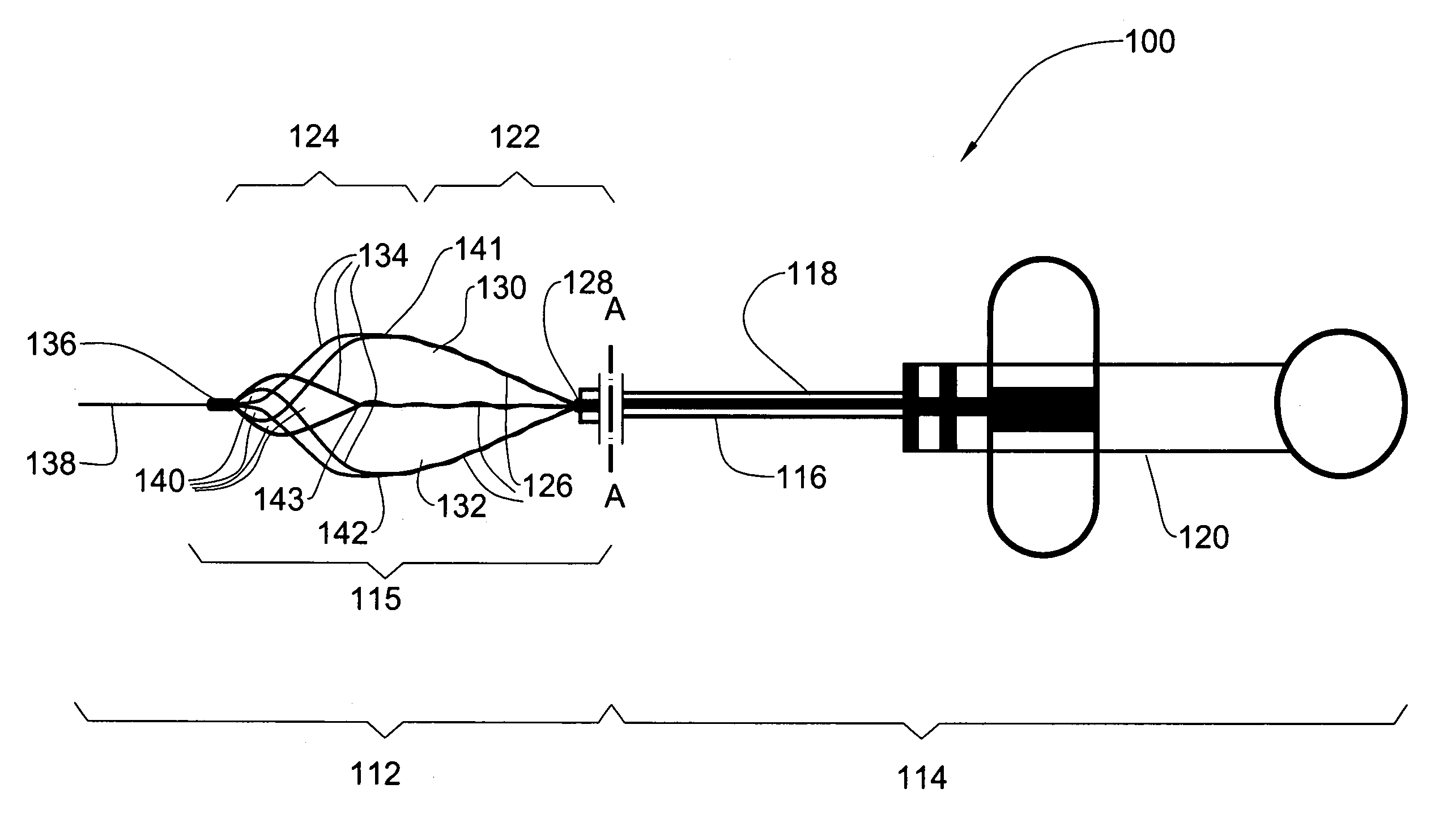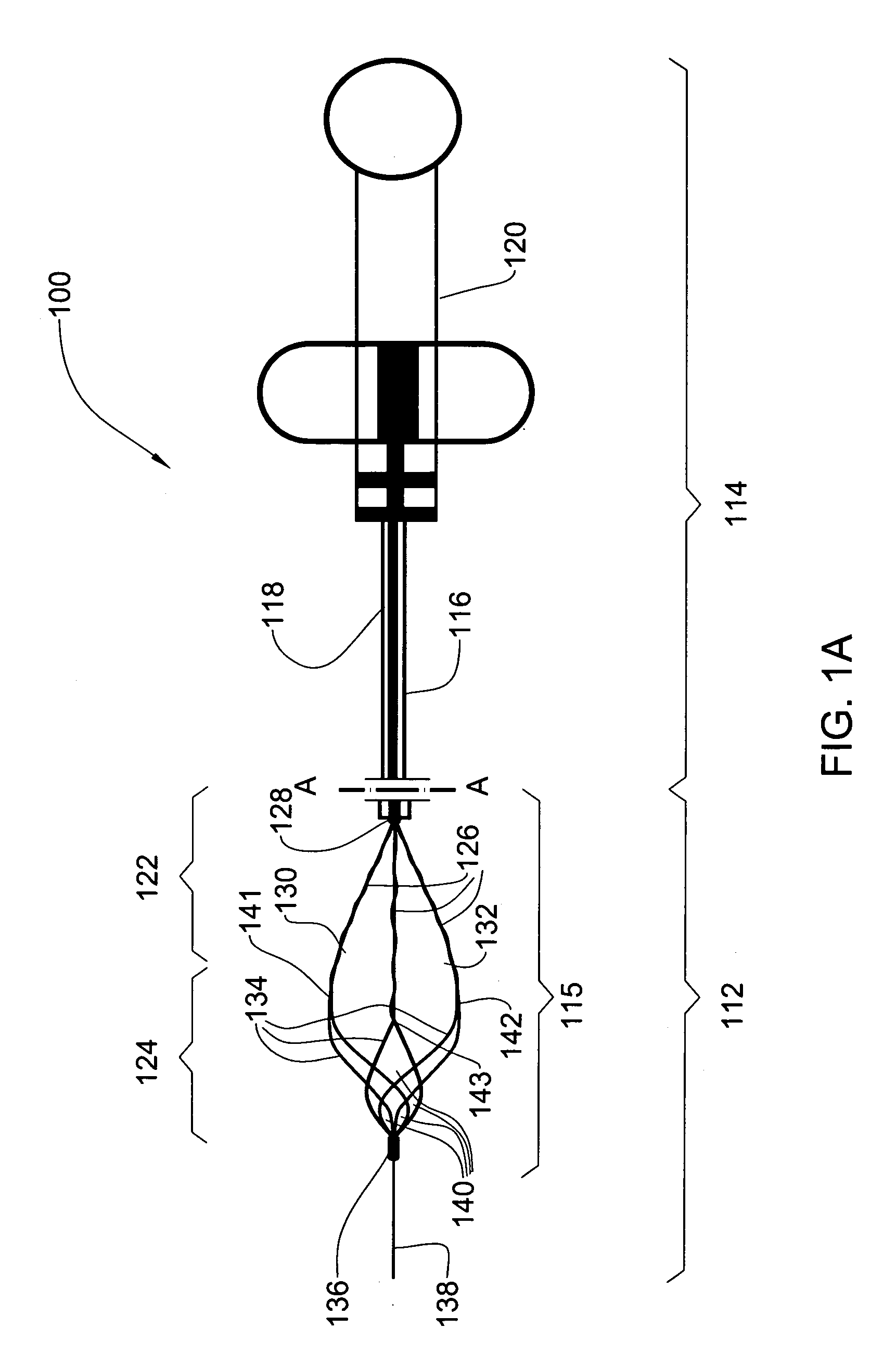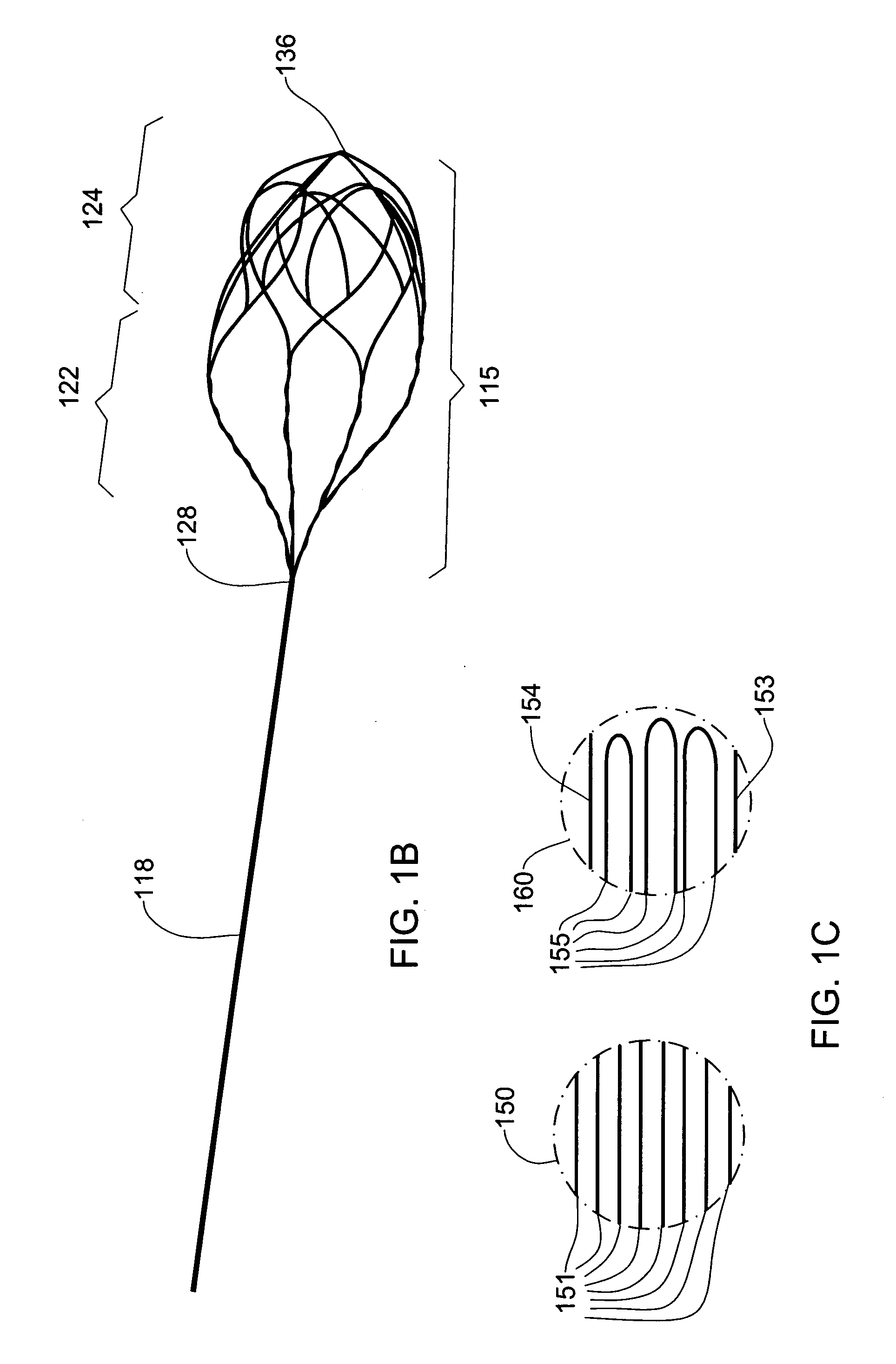Surgical device for retrieval of foreign objects from a body
a surgical device and foreign object technology, applied in the field of medical instruments, can solve the problems of entrapped objects in baskets, traumatic influence on organs, and difficulty in evacuating such objects from surgical patients' bodies, so as to reduce the traumatic influence of organs, minimize the damage of urinary tract tissue, and increase the springiness and flexibility
- Summary
- Abstract
- Description
- Claims
- Application Information
AI Technical Summary
Benefits of technology
Problems solved by technology
Method used
Image
Examples
Embodiment Construction
[0072]The principles and operation of the surgical device according to the present invention may be better understood with reference to the drawings and the accompanying description, it being understood that these drawings and examples in the description are given for illustrative purposes only and are not meant to be limiting.
[0073]Referring to FIG. 1A, a general schematic view of a surgical device 100 devised for the retrieval of various calculi or other objects from a human or animal body during the treatment of biliary, urinary or other systems is shown, according to one embodiment of the invention. Such treatment may include the extraction of stones from the urethra (e.g., cystic calculus and ureteral calculus), as well as bile duct (choledochal) stone, biliary calculus, etc. It should be appreciated that the device 100 can also be used in other surgical treatments in combination with other surgical instruments and equipment, (e.g. for the destruction of calculi, etc.).
[0074]Th...
PUM
 Login to View More
Login to View More Abstract
Description
Claims
Application Information
 Login to View More
Login to View More - R&D
- Intellectual Property
- Life Sciences
- Materials
- Tech Scout
- Unparalleled Data Quality
- Higher Quality Content
- 60% Fewer Hallucinations
Browse by: Latest US Patents, China's latest patents, Technical Efficacy Thesaurus, Application Domain, Technology Topic, Popular Technical Reports.
© 2025 PatSnap. All rights reserved.Legal|Privacy policy|Modern Slavery Act Transparency Statement|Sitemap|About US| Contact US: help@patsnap.com



